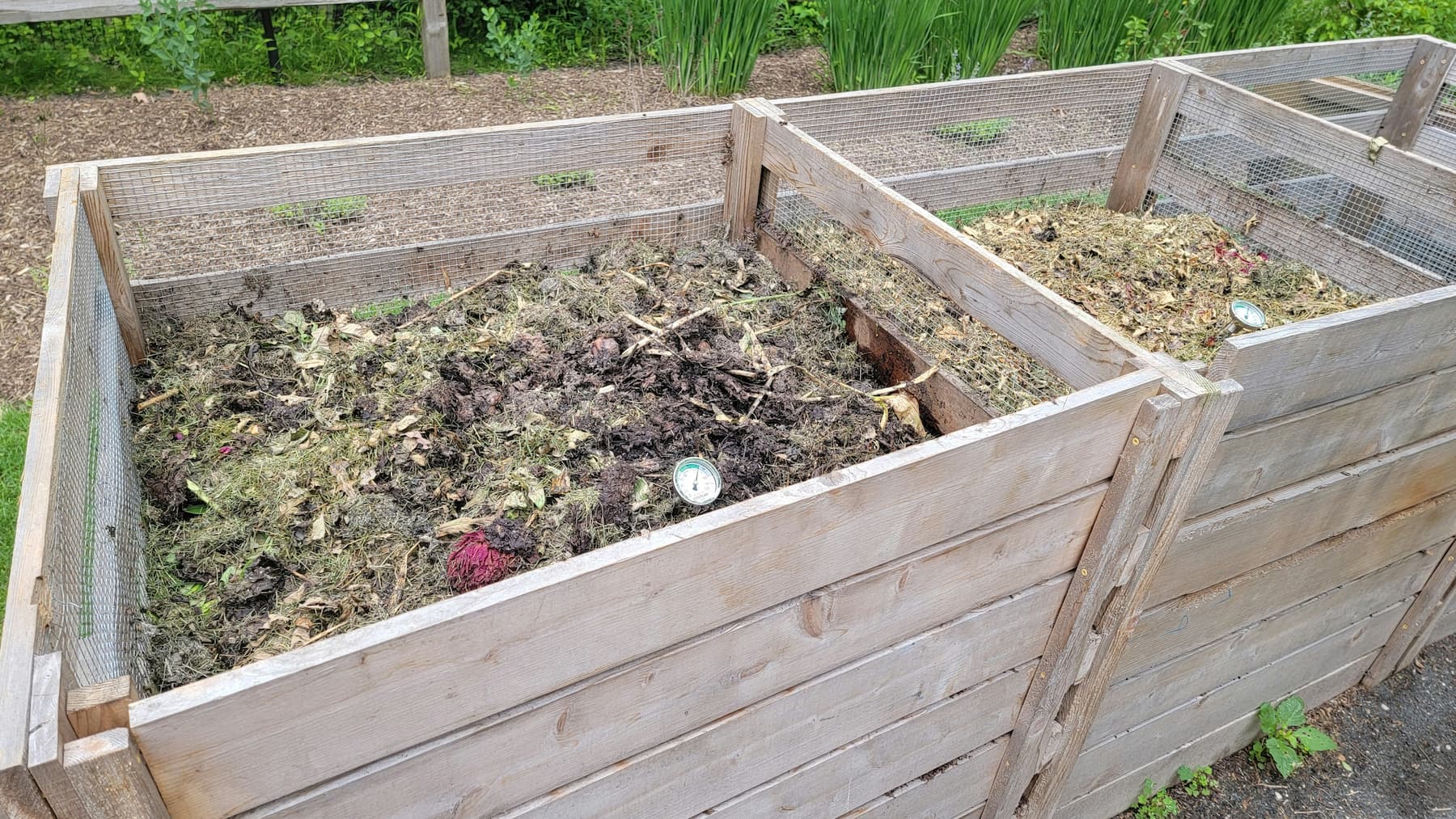The guilt hit me every time I scraped vegetable peels into the trash. There I was, talking big game about sustainability and reducing waste, while sending perfectly compostable scraps to the landfill. But what choice did I have? Living in a 700-square-foot apartment with no outdoor space seemed to make composting impossible.
Or so I thought.
After one particularly shame-filled moment tossing out the remains of a farm-to-table meal (the irony wasn’t lost on me), I decided enough was enough. There had to be a way for apartment dwellers like me to compost without creating a smelly disaster or attracting every fruit fly in the neighborhood.
Turns out, there is—several ways, actually. And after six months of experimenting, I’ve learned that urban composting isn’t just possible; it’s actually pretty straightforward once you find the right method for your space and lifestyle.
Why Bother Composting in an Apartment?
Before diving into the how, let’s talk about the why. When food waste goes to landfills, it gets trapped without oxygen and releases methane—a greenhouse gas that’s about 25 times more potent than carbon dioxide. By composting, you’re not just creating rich soil; you’re actively fighting climate change from your kitchen counter.
Plus, there’s something deeply satisfying about turning what would have been garbage into something valuable. The first time I used my own compost in a houseplant and watched it thrive, I felt like some kind of urban-dwelling earth goddess. Not bad for someone who once killed a cactus.
Option 1: Freezer Storage + Community Drop-Off
Perfect for: The minimalist who doesn’t want extra equipment but has access to a community garden or farmers market with compost collection.
This was my gateway into apartment composting, and honestly, it couldn’t be simpler:
- Keep a container in your freezer (I repurposed an ice cream tub—empty, sadly)
- Toss in your compostable scraps whenever you’re cooking
- Once full, transport your frozen scraps to a community compost site
Freezing eliminates odors and slows decomposition until you’re ready to drop it off. Many farmers markets and community gardens now accept compost donations—mine does every Saturday morning, which works perfectly with my weekend routine.
The real talk: This method requires exactly zero investment and zero smell, but you do need somewhere to take your scraps regularly. After missing a few drop-offs during a busy month at work, I ended up with a freezer full of frozen banana peels and nowhere to put new groceries. Not my finest moment.
Option 2: Bokashi Fermentation
Perfect for: The kitchen scientist who’s fascinated by fermentation and doesn’t mind a multi-step process.
Bokashi isn’t technically composting—it’s fermentation. But it’s a brilliant system for apartments because it’s enclosed, relatively quick, and can handle things regular compost piles can’t (like small amounts of dairy and meat).
The process involves layering food scraps with bokashi bran (grain inoculated with beneficial microorganisms) in an airtight bucket. The microbes break down the food through fermentation rather than decomposition.
I tried this method for three months and found it oddly satisfying. The process doesn’t smell bad—just slightly sweet and pickled if you do it right. The downside is that after fermentation (about 2 weeks), you still need to bury the pre-compost somewhere for it to finish breaking down.
For me, this meant begging a friend with a garden to let me bury my fermented food scraps in her yard once a month. She agreed, but only because I bribed her with sourdough bread. If you have a large houseplant or access to even a tiny outdoor space, this could work brilliantly for you.
The real talk: This method requires buying specialized equipment (a bokashi bucket with spigot and the bokashi bran), so there’s some upfront cost. You also need somewhere to put the fermented material to finish its transformation into soil.
Option 3: Worm Composting (Vermicomposting)
Perfect for: The nurturing type who doesn’t mind caring for hundreds of tiny roommates.
I resisted vermicomposting for months because, well, worms. Not exactly the pets I had in mind for my apartment. But after my friend Taylor showed me her setup—a clean, odorless bin tucked under her kitchen sink—I decided to give it a try.
And you know what? I’ve become surprisingly attached to my worm herd. They’re quiet roommates who pay rent in the form of amazing compost for my houseplants.
The basic setup involves:
- A specialized worm bin (or a DIY version with drainage)
- Bedding material (shredded newspaper, coconut coir)
- Red wiggler worms (not the same as earthworms!)
- Your kitchen scraps (with some limitations)
The worms eat both the food scraps and the bedding, producing castings (worm poop) that happen to be some of the best plant food on the planet.
The real talk: There’s definitely a learning curve. My first month included one great escape (turns out worms are sensitive to light and vibration) that had me finding stragglers on my kitchen floor for days. But once you get the hang of it, it’s surprisingly low-maintenance. Just avoid overfeeding, keep the bin at a comfortable room temperature, and don’t give the worms citrus, onions, or spicy foods (they’re surprisingly picky eaters).
Option 4: Electric Composters
Perfect for: The tech-savvy apartment dweller who wants results with minimal fuss (and has a bit of cash to invest).
The newest additions to the urban composting scene are electric composters like the FoodCycler, Lomi, or similar devices. These machines dry and grind food waste into a nutrient-rich powder within hours.
My neighbor has one and gave me a demo that honestly seemed like kitchen magic—banana peels and eggshells went in, and a few hours later, she had a small container of dry, soil-like material that smelled faintly earthy. No odors during the process, no pests, and nearly instant results.
The real talk: These are expensive (typically $300-500) and use electricity, which feels a bit counterintuitive for an environmental practice. The resulting material isn’t quite the same as traditional compost but works well when mixed with potting soil for houseplants. This is definitely the lowest-effort option if budget isn’t a concern.
Option 5: Compost Collection Services
Perfect for: The person willing to pay a small fee for convenience.
If you’re lucky enough to live in a forward-thinking city, you might have access to compost collection services. For a monthly fee (typically $20-30), these services provide a container and regular pickup of your food scraps—just like trash collection, but for compostables.
When I was recovering from surgery last year and couldn’t make my regular compost drop-offs, I used a local service for three months. The simplicity was worth every penny during that time—I kept a small container on my counter, transferred it to the collection bucket in the building’s garbage area when full, and they handled the rest.
The real talk: This is the easiest option but comes with ongoing costs. Many services provide finished compost back to subscribers seasonally, which is a nice bonus if you have plants to feed.
My Current Setup: A Hybrid Approach
After trying all these methods, I’ve settled on a combination that works perfectly for my small apartment and schedule:
I keep a small container in the freezer for things my worms don’t like (citrus peels, onion scraps) and take that to the community garden monthly. The rest goes into my worm bin, which lives happily beside my shoe rack in the entryway closet (turns out this location has the perfect temperature and humidity for them).
The system produces enough compost for all my houseplants with some leftover to share with neighbors. Last month, I traded a container of worm castings for a cutting of my neighbor’s monstera plant—possibly the most satisfying barter of my adult life.
Getting Started: Your First Week of Apartment Composting
Ready to try it yourself? Here’s what I wish someone had told me when I started:
- Start smaller than you think. Your first compost container should be tiny—like butter-container tiny. You’ll produce less compostable waste than you imagine at first, and success with a small volume will build your confidence.
- Keep a “yes” and “no” list on your fridge. Different composting methods can handle different materials, and it’s easy to forget what goes where when you’re just starting out.
- Embrace the “browns.” Most new composters collect too many “greens” (food scraps) and not enough “browns” (paper, cardboard, dry leaves). Both are necessary for good compost. I tear up paper egg cartons and junk mail envelopes to add to my worm bin.
- Expect some trial and error. My first attempt at vermicomposting included accidentally overfeeding my worms, creating a fruit fly situation that required emergency intervention (thank you, apple cider vinegar traps). These hiccups are normal and not a sign that you should give up.
- Find your community. Whether it’s an online forum, a local gardening group, or that eco-conscious neighbor down the hall, connecting with other urban composters provides invaluable troubleshooting advice and encouragement.
The Unexpected Benefits
Besides the obvious environmental impact, apartment composting has brought some surprising benefits to my life:
- I’ve become much more conscious of food waste in general, which has actually saved me money on groceries
- My houseplants are absolutely thriving on the compost I produce
- I’ve connected with like-minded neighbors through our building’s composting chat group
- There’s a strange satisfaction in watching scraps transform into soil—it’s a little bit of natural magic in an otherwise very urban existence
Is it occasionally messy? Sure. Has there been a learning curve? Absolutely. But is it worth it? Without question.
So next time you’re chopping vegetables in your tiny kitchen, remember that those carrot tops and cucumber ends don’t have to be trash—even if your outdoor space consists of nothing more than a fire escape. Urban composting isn’t just possible; it might just become your favorite small act of environmental rebellion.
Would love to hear from other apartment composters out there! What method works for you? Share your experiences in the comments or tag us in your apartment composting setups on Instagram with #BLBUrbanComposting.


Leave a Reply